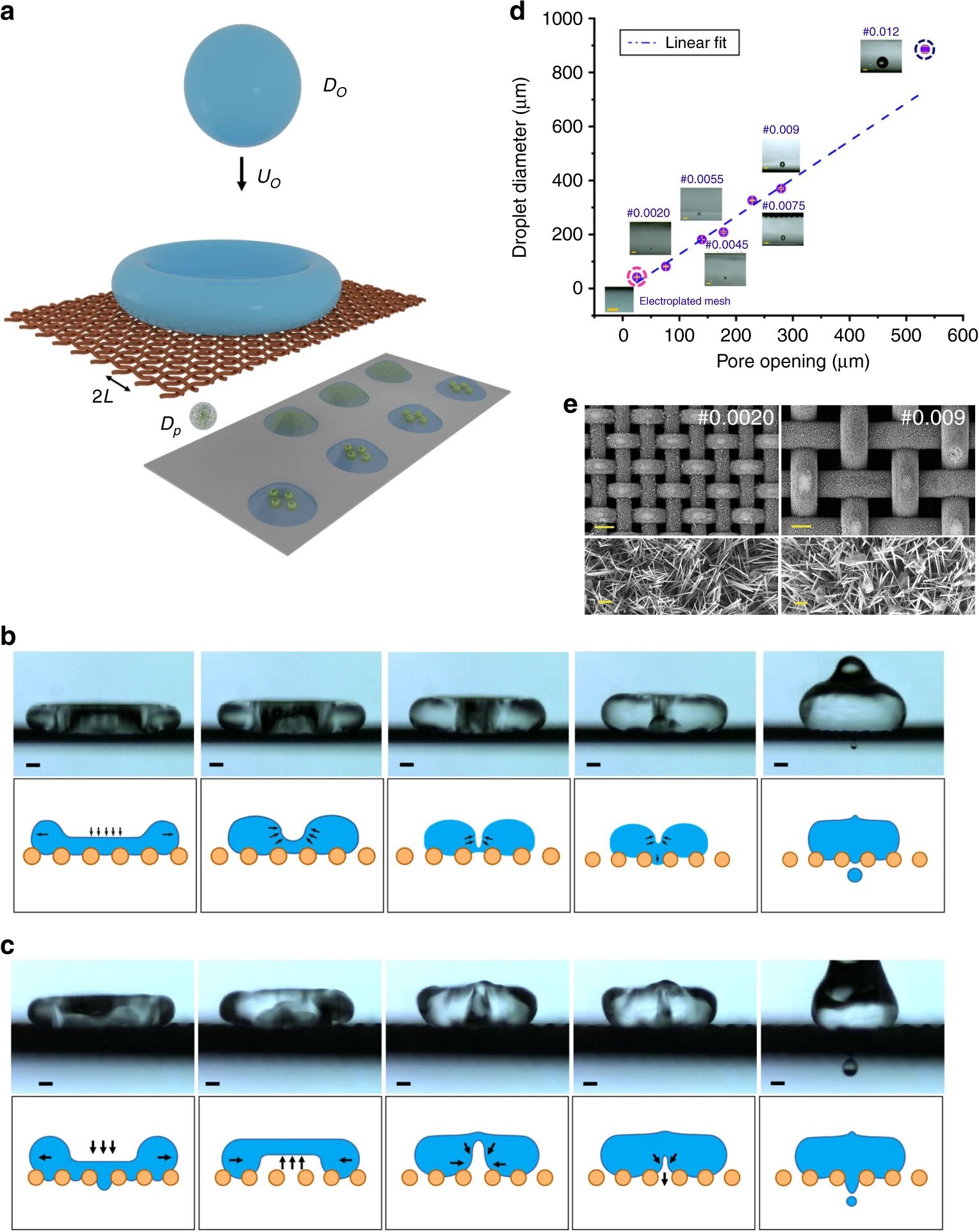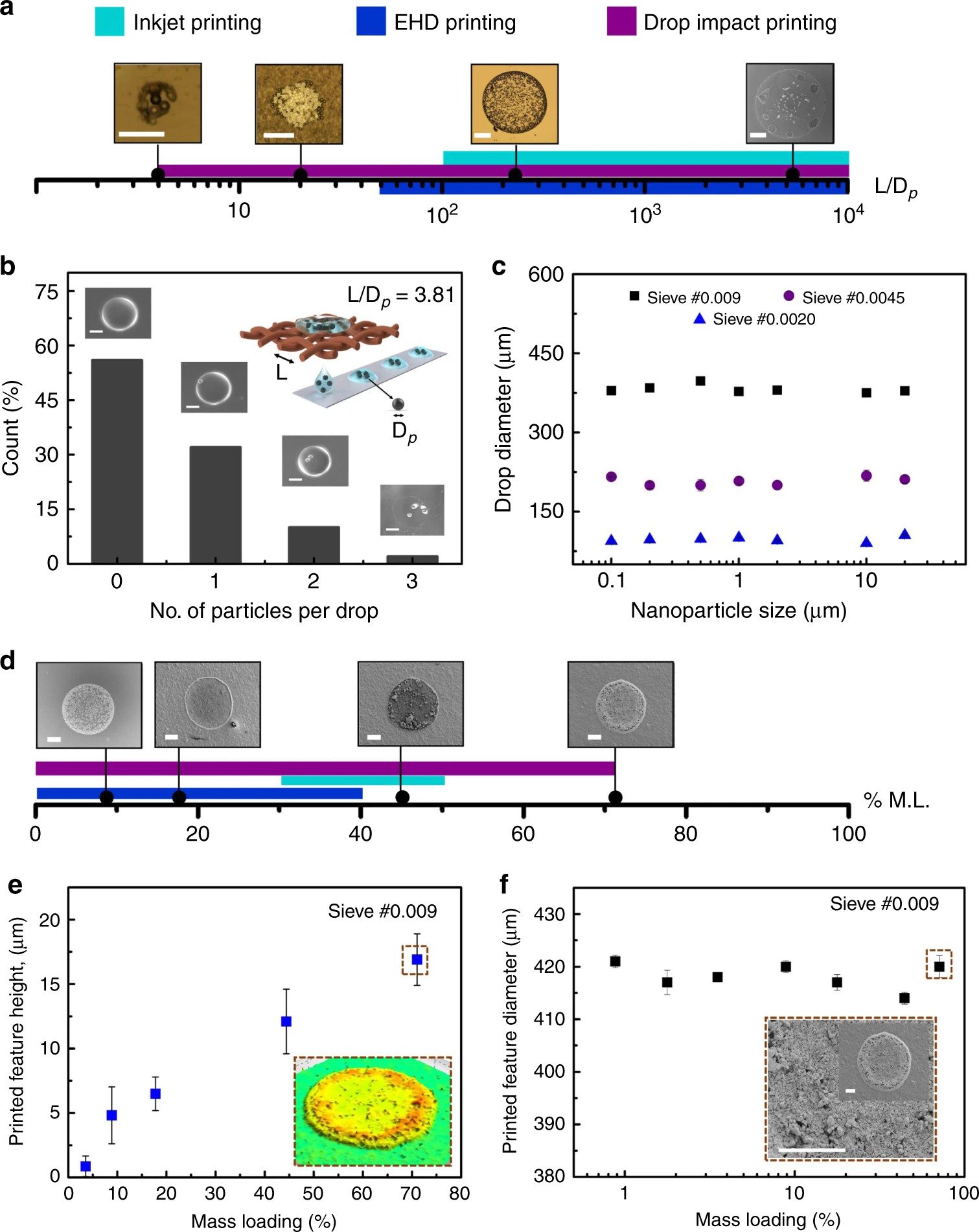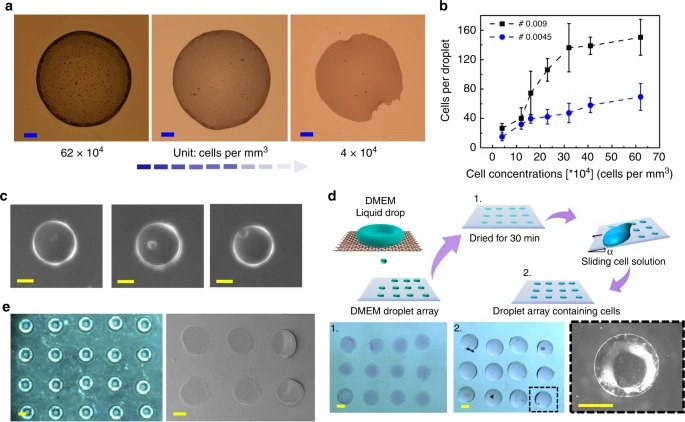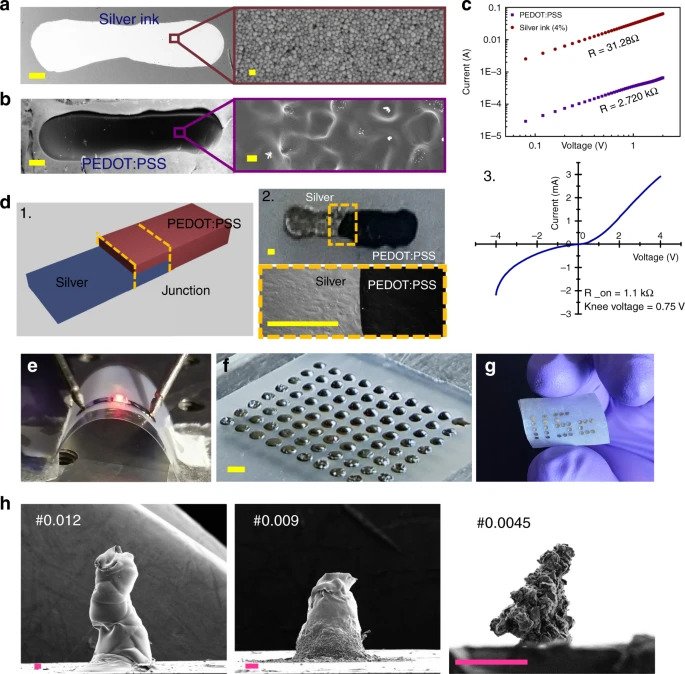Researchers from the Centre for Nanoscience and Engineering (CeNSE) at the Indian Institute of Science, Bangalore, have developed a drop impact 3D printing technique that uses a superhydrophobic sieve in favor of a nozzle to dispense droplets.
Most microdroplet printing technologies use a nozzle-based dispensing technique within which the nozzle focuses the applied force and determines the droplet size. However, nozzles can become clogged and ‘satellite drops’, which are unwanted products of the droplet-formation process, can occur when employing these techniques.
According to the researchers, their method mitigates these issues, and as a result, is more widely accessible than existing droplet printing techniques due to its simplicity, easy operation, and economy.
The superhydrophobic sieve
The technique proposed by the researchers is based on the impact of a droplet as it comes into contact with a superhydrophobic sieve. Superhydrophobic refers to a surface that is extremely difficult to wet and is also known as the ‘lotus effect’ in reference to the superhydrophobic leaves of a lotus plant.
Once released from a height, the impact of the droplet upon contact with the sieve creates capillary waves, similar to a ripple, which causes an air cavity to form between the droplet and the sieve. During the recoil phase of the droplet, the air cavity collapses, from which a single microdroplet is generated. This process is called ‘recoil ejection’ by the researchers. The size of the microdroplet can be controlled by varying the topography of the sieve’s surface, which alters the cavity collapse dynamics.
During the testing phase, superhydrophobic sieves with various pore openings were used to explore the smallest and largest ejected droplets that could be generated. The outcome of the drop impact is determined by the balance between the dynamic pressure of the impinging droplet and the breakthrough pressure of the sieve. Simply, success depends on striking the right balance between the falling force of the droplet and the amount of force needed to penetrate the sieve.
Compared to conventional inkjet printing, this drop-on-demand technique enables the printing of droplets with high mass loading, the capability to print large particles, and allows a wide range of printed droplet volumes. The method also involves a simple set up and low operational costs, although the researchers point out the printing resolution and accuracies aren’t as good as some other techniques, such as electrohydrodynamic (EHD) printing.
Another benefit to this technique is the easy and instant reconfiguration for different microdroplet sizes; the sieve can simply be swapped out for another with the desired pore openings and the printing process can continue.

Printing large particles and high mass loading
The printing of large particles is required for applications such as cell suspensions, functionalized microbeads, and 3D microparticle structuring for dental prosthetics.
In conventional nozzle-based inkjet printers, the nozzle diameter limits the particle size that can be printed. When printing large particles, nozzle clogging can occur, which if not fixable can be expensive to replace. According to the researchers, nozzle diameter should be 100 times greater than the particle size to avoid clogging. However, they observed this ratio reduce to just four by replacing the nozzle with the superhydrophobic sieves, significantly improving the performance of drop printing large particles.
Printing inks with higher mass loading is beneficial as it reduces the number of reprints required for achieving higher thickness, however as the viscosity of the ink increases, the jetting of suspensions becomes more difficult. Using the superhydrophobic sieves, the researchers were able to achieve a maximum mass loading of 71% for a droplet with 16.9 µm thickness, in comparison to around 45% when using a nozzle.

Printing for biological applications
The ability to print microarrays, such as bacteria, DNA, and cells, for gene-expression analysis, single-cell printing, basic biological cell studies, and biopolymer printings, at room temperature is an area of great interest within biological science. The technique proposed by the researchers was tested for printing small volumes of biosamples and molecules.
Single-drop printing of red blood cell suspension was performed on a glass slide. Analysis revealed that as the concentrations increased, the number of cells per droplet increased too, while remaining isolated within the droplets. This gave the researchers very small sample volumes which could be isolated from each other and reduced the time needed for pipetting and placing samples. The study was extended to print a single cell in a single droplet, indicating the method’s potential for clog-free printing of large cells for a variety of applications.
To realize the possibility of printing viscous bioink for 3D printing applications, polyacrylic acid was used as a model-printing liquid. Once cured, the result was a micron-sized polymeric micropost.

Printing for electronic applications
The researcher’s drop-on-demand printing technique can also be applied to the printing of electrically conducting materials for flexible electronics applications. Conductive lines were printed using solutions of silver-ink, initially optimized for good conductivity with single-layer printing, and polystyrene sulfonate (PEDOT:PSS), on a glass substrate to create a diode.
The researchers also printed connections for an LED on a flexible tape, letters on a flexible substrate, and 3D printed Zirconium diode pillars using sieves with different pore openings. The printing process can also be scaled through multiple drop impacts on a single sieve, the advantage being easy-handling and cost-effective large-area printing for electronic applications.

Benefits of drop-on-demand printing using superhydrophobic sieves
All in all, the study presents a drop-on-demand 3D printing technique with a relatively simple design, and therefore, low setup cost. As previously mentioned, the use of a superhydrophobic sieve instead of a complex nozzle further reduces the operational costs of this method, while eliminating the risk of clogging and production of unwanted satellite drops. Additionally, the method does not require any electric, magnetic, or wave forces, aside from a pump that will eject the ink.
The technique’s versatility also makes it suitable for a wide variety of printing solutions within several different applications, such as ceramics-based 3D printing for dental prostheses and architectural modeling, dispensing biological samples, 3D organ printing, and printing for electronic applications.
More information on the study can be found in the article “Drop Impact Printing” published in the Nature journal. The study is co-authored by C. Modak, A. Kumar, A. Tripathy, and P. Sen.
Advancements in drop-on-demand 3D printing
The past year alone has seen several innovations within the field of drop-on-demand additive manufacturing, particularly in the 3D printing of synthetic tissues and soft robotics.
In June, researchers from the University of Oxford improved upon a single-droplet resolution 3D bioprinting process to allow them to create synthetic tissues with greater precision. The technique could enable the 3D printing of complex synthetic tissues such as adhesive giant unilamellar vesicles or protein compartments. Meanwhile, Researchers from the University of California, Davis published a paper detailing a new technique involving the use of a droplet-based, multi-phase microfluidic system to efficiently 3D print finely-tuned flexible materials. Potential applications for the technology included soft robotics, tissue engineering, and wearable technology.
Elsewhere, scientists from the University of Montreal developed a new method of cell bioprinting named Laser Induced Side Transfer (LIST), which utilizes a low energy nanosecond laser and the laws of microfluidic dynamics to jet living cells onto each other. The team of scientists partially printed a human umbilical vein using the LIST method, and believe their work can be adapted for 3D drug screening models and artificial tissues in the future.
Most recently, researchers from the Chinese Academy of Sciences and Massachusetts Institute of Technology successfully developed a 3D printing method to produce controllable 3D structures from a single resin droplet. To illustrate the controllability element of the method, the researchers printed molar, incisor, and canine teeth from one droplet of resin through use of a UV projector, a UV-transparent curing interface, and an aluminum supporting plate mounted of a moving platform.
Subscribe to the 3D Printing Industry newsletter for the latest news in additive manufacturing. You can also stay connected by following us on Twitter and liking us on Facebook.
Be sure to subscribe to the Another Dimension podcast on your chosen podcast player to make sure you never miss an episode.
Looking for a career in additive manufacturing? Visit 3D Printing Jobs for a selection of roles in the industry.
Featured image shows Mechanism and explanation of drop-impact printing technique. Image via ‘Drop on Demand’.



